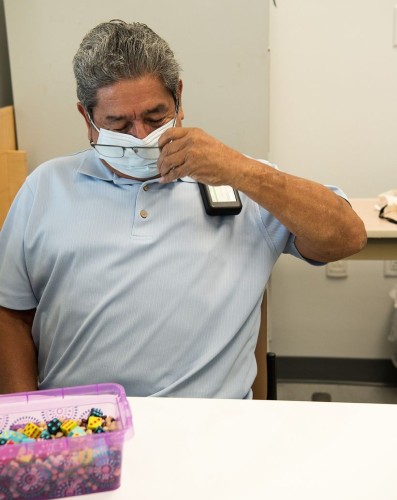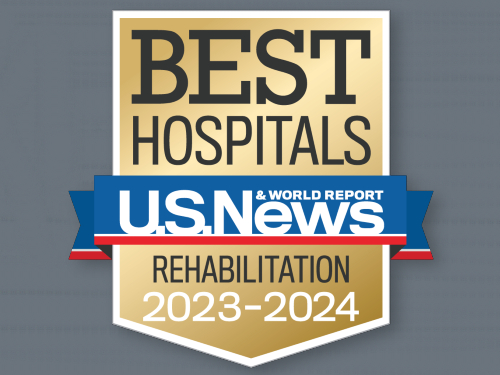
In the study, published in August by the journal Archives of Physical Medicine and Rehabilitation, 15 adults with chronic ischemic stroke who had moderate to severe arm and hand impairment underwent a surgical procedure to implant a VNS device in the chest cavity. The device is designed to deliver small electrical pulses to the vagus nerve in the neck.1
After the procedure, participants underwent six weeks of in-clinic physical therapy followed by three months of home-based rehabilitation, as part of an approach called paired VNS therapy.
One year after paired VNS therapy, participants saw, on average, improvement of over nine points on the Fugl-Meyer Assessment for Upper Extremity (FMA-UE), a commonly used, 226-point scale designed to assess patients’ ability to perform activities of daily living, functional mobility and pain. At two- and three-year follow-ups, participants’ FMA-UE scores improved by an average of 11.4 and 14.8 points, respectively.

“These are patients who have been determined to have plateaued in their recovery and exhausted other treatment options,” he continues. “Now, we are able to offer them something that can further their recovery.”
VNS is an FDA-approved therapy for drug-resistant epilepsy and depression. VNS devices have been implanted in more than 100,000 patients.2
For this study, Dr. Francisco and his colleagues used the Vivistim® Paired VNS™ System, a device approved by the FDA in 2021 for the treatment of moderate to severe upper limb motor deficits in chronic ischemic stroke survivors. In 2021, Dr. Franciso’s team published results after one year in this same treatment group of patients.3
In both studies, participants performed self-administered, home-based VNS therapy by swiping the magnet over the chest wall to activate a 0.5-second pulse every 10 seconds for a 30-minute session, at least once daily. As part of both in-clinic and at-home rehabilitation, a physical therapist designed repetitive functional tasks based on everyday activities to facilitate gross arm movement, hand and wrist movements, and finger dexterity.
In addition to the improvement in FMA-UE, participants saw 0.21- and 0.42-point increases in average Wolf Motor Function Test (WMFT) scores at years 2 and 3, respectively. The 75-point WMFT is designed to assess dexterity, strength and upper extremity function. There were no serious long-term adverse events reported by study participants.
Based on these findings, most patients with hand and arm impairment due to chronic ischemic stroke could benefit from the paired VNS approach, according to Dr. Francisco. However, those with some residual movement in the hand, particularly in the fingers, will likely see even more improvement, especially if they are highly motivated to perform the repetitive movement exercises that are key to the approach, he says.
“Although VNS is an important part of this therapy, I really look at it as an adjunct to repetitive exercise,” Dr. Francisco notes. “Yes, people who underwent the paired approach saw the most improvement in our study, but those who did the exercises alone also made significant gains.”
He and his colleagues are already assessing long-term results in study participants and investigating potential use of the paired VNS approach in patients with spinal injuries.
“We’re hoping that paired VNS will be part of standard of care for stroke survivors as well as others with hand and arm impairment caused by other injuries and/or trauma,” Dr. Francisco says. “After months of rehabilitative therapy, many times clinicians will say these patients have plateaued when they haven’t—it’s that we haven’t offered them something that can help unlock further potential. We see paired VNS as being able to do just that.”
References
- Francisco GE, Engineer ND, Dawson J, et al. Vagus nerve stimulation paired with upper-limb rehabilitation after stroke: 2- and 3-year follow-up from the pilot study. Arch Phys Med Rehabil. 2023;104(8):1180-1187.
- Toffa DH, Touma L, El Meskine T, et al. Learnings from 30 years of reported efficacy and safety of vagus nerve stimulation (VNS) for epilepsy treatment: a critical review. Seizure. 2020;83:104-123.
- 3. Dawson J, Liu CY, Francisco GE, et al. Vagus nerve stimulation paired with rehabilitation for upper limb motor function after ischaemic stroke (VNS-REHAB): a randomised, blinded, pivotal, device trial. Lancet. 2021;397(10284):1545-1553.
